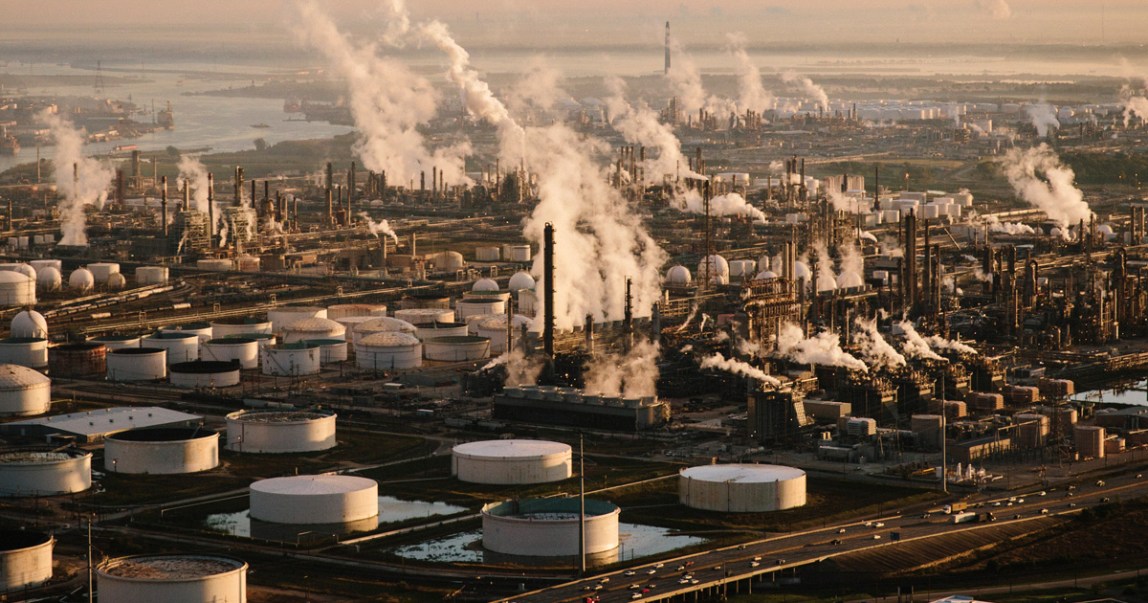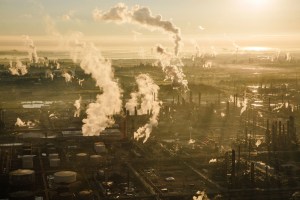Related: How we made Hell and High Water
In 2005, we watched in horror as news reports showed a devastated New Orleans in the days after Hurricane Katrina. Brackish water flooded the city, wrecking buildings and leaving people “literally dying in the street.”
These images are part of our national memory, as is President George W. Bush’s claim in the days following the storm, “I don’t think anybody anticipated the breach of the levees.”
But that wasn’t true. Three years before Katrina, New Orleans Times-Picayune reporters Mark Schleifstein and John McQuaid wrote that it was “only a matter of time” before a major hurricane would hit New Orleans, even predicting that a Category 3 storm could breach the city’s complex of levees. Scientists, too, had long issued similar warnings, to no avail.
Today, ProPublica and The Texas Tribune offer “Hell and High Water,” a call to action before an even bigger American city meets New Orleans’ fate.
Houston is the fourth-largest city in the country. At its southeastern outskirts is the Houston Ship Channel, a crucial artery for the nation’s largest refining and petrochemical complex. Like the rest of the Gulf Coast, the area is vulnerable to the kinds of strong storms that are becoming more frequent, and a major hurricane here could bring economic and ecological disaster.
Among the many potential effects of a “monster hurricane”:
- Flood damage would cripple the Houston Ship Channel, a 52-mile waterway lined by 10 major oil refineries and dozens of chemical manufacturing plants that are major makers of plastics, specialty and agrochemicals. That would cause the price of fuel and many consumer goods to spike. If oil or chemicals from storage tanks that line the Ship Channel leak into the Gulf, the environmental impact could be devastating.
- Storm surge would wipe out homes and businesses in the low-lying Clear Lake area, which also includes the Johnson Space Center, headquarters for NASA’s human spaceflight operations.
- Ever since the “Great Storm of 1900,” the city of Galveston has been in a constant state of repairing and rebuilding. A perfect storm would once again devastate the barrier island, where more than 23 percent of the population lives at or below the poverty line.
Some people in Texas know what’s at stake. They’ve talked about this for years, particularly after Hurricane Ike, which made landfall in 2008 and devastated Galveston Island. They’ve funded studies and debated whether to build better storm protection systems.
But so far, there hasn’t been significant progress to make the region safer. In fact, since Ike, more people and businesses have moved into low-lying areas, making the area more vulnerable than ever to storms.
Hell and High Water – a multimedia presentation that culminates almost a year of work across two newsrooms, ProPublica and The Texas Tribune – visualizes the full spectrum of what awaits Houston.
In addition to on-the-ground reporting and photography, the project uses sophisticated meteorological models developed by experts at a constellation of universities in Texas and Mississippi – models so complex they required supercomputers to run.
The project uses these models to let readers simulate the effects of several storms. After a brief introduction that lays out these scenarios, the reader is presented with an interface in which he or she can “play” several storm simulations and see the damage each causes to the area. Some of those simulations can ben seen with proposed protections.
One of the simulations is based on what really happened during Ike. The rest are predictions by scientists.
For instance, one shows what would have happened if Hurricane Ike had made landfall near San Luis Pass, south of Galveston – as meteorologists originally predicted it would. Because of the way winds and storm surge would have moved, that storm would have inundated much of the Ship Channel.
So, too, would the other scenarios, which simulate far stronger storms that scientists think of as worst-case scenarios. Their greater intensity would yield much larger storm surges, causing yet more devastation to the Ship Channel and to nearby population centers.
Several storm protection systems, involving seawalls and gates, have been discussed for the past few years. ”Hell and High Water” lets readers see how three of these would fare against some of the worst-case storm scenarios.
Residents or others interested in the area can type in addresses and see how high the water would rise near homes in different scenarios, and how much each proposed solution would protect them.
Scientists tell us that it is simply a matter of when, and not if, a monster storm is coming for Houston. Given this reality, this project examines why so few steps have been taken to safeguard this valuable and vulnerable region.
State and federal politics have played a role, as have the contentious relationships between competing academic groups studying the problem. It’s also true that communities struggle to act when the timing of a threat remains unpredictable and its potential devastation remains abstract.
It is this failure to imagine a future disaster that “Hell and High Water” attempts to solve: You can quite literally see how a storm would change the map of Houston before it really does.
In the course of this project, we reached out to the most important decision-makers in Texas, including the state’s entire congressional delegation and both of its U.S. senators, one of whom is running for president. So none of them can say nobody could anticipate the calamity a large storm could inflict upon their constituencies.
Yet, even among those who acknowledge the need to act, there’s an acceptance that progress may take years. George P. Bush, scion of the Bush clan and head of the agency charged with protecting the state’s coast, told us, “You and me may not even see the completion of this project in our lifetime.”
In “Hell and High Water,” we envision what will happen if that help comes too late.












